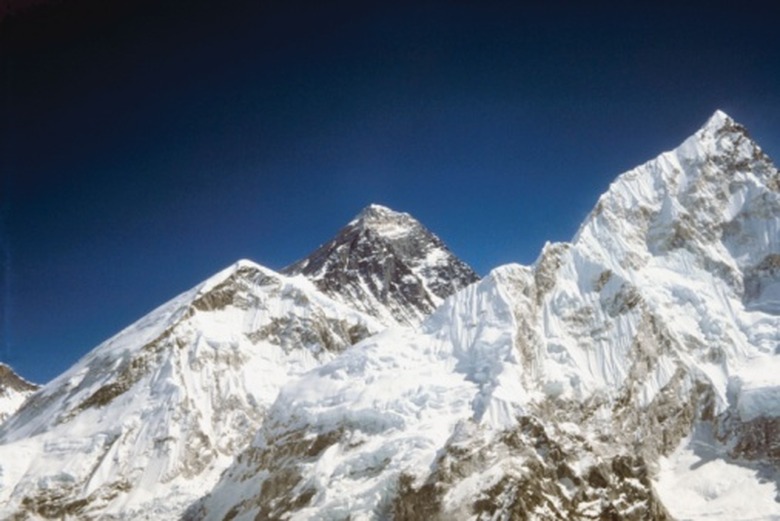The Definition Of Tectonic Activity
Plate tectonics is a geological theory that explains the phenomenon of continental drift. According to the theory, the Earth's crust is made up of continental and oceanic plates, which move across the surface of the planet, meeting at plate boundaries. Plate tectonics cause volcanic activity, mountain-building, ocean trench formation and earthquakes.
Continental Drift
Continental Drift
The theory of continental drift was first proposed by Alfred Wegener in 1915. It had long been noted that continental coastlines appeared to fit together like giant puzzle pieces, most notably the west coast of Africa and the east coast of South America. Wegener hypothesized that a supercontinent, named Pangaea, existed 200 million years ago; this supercontinent subsequently broke apart in to several continental pieces. Since Wegener's hypothesis, substantial fossil and geological evidence has been compiled to validate continental drift theory.
Lithosphere and Asthenosphere
Lithosphere and Asthenosphere
Continental drift is explained through the activity of tectonic plates. According to plate tectonics theory, the Earth's lithosphere, which is composed of the crust and a portion of the upper mantle, is broken into plates that float independently on top of the more liquid asthenosphere. There are eight major plates and many minor plates, which move relative to each other at plate boundaries. Plate boundaries are defined as convergent or colliding, divergent, or transform.
Plates and Plate Boundaries
Plates and Plate Boundaries
Tectonic plates are divided into continental plates and oceanic plates. At convergent boundaries, subduction takes place as one plate slides beneath another, recycling the plate material into the mantle. With convergent oceanic plates, subduction always occurs. Ocean plates also always subduct below continental plates, often producing zones of volcanic activity and earthquake faults, such as occur along the West Coast of the United States. With colliding continental plates, neither may subduct, resulting in rising continental crust and the building of mountains and plateaus. The Himalayas are an example of mountains produced by the convergence or continental plates.
Sea Floor Spreading
Sea Floor Spreading
As the lithosphere is recycled due to plate subduction, additional crust is created at divergent plate boundaries. Most divergent boundaries occur between oceanic plates, with the greatest amount of crust formation occurring at mid-oceanic ridges. At these boundaries, as the plates move away from each other, volcanic activity results in molten magma rising from the mantle to fill the open space. Activity can be pronounced at some divergent boundaries, resulting in volcanic islands, such as the Hawaiian Islands and other volcanic islands of the Pacific.
Cite This Article
MLA
Johnson, Scott. "The Definition Of Tectonic Activity" sciencing.com, https://www.sciencing.com/definition-tectonic-activity-8336422/. 24 April 2017.
APA
Johnson, Scott. (2017, April 24). The Definition Of Tectonic Activity. sciencing.com. Retrieved from https://www.sciencing.com/definition-tectonic-activity-8336422/
Chicago
Johnson, Scott. The Definition Of Tectonic Activity last modified March 24, 2022. https://www.sciencing.com/definition-tectonic-activity-8336422/
